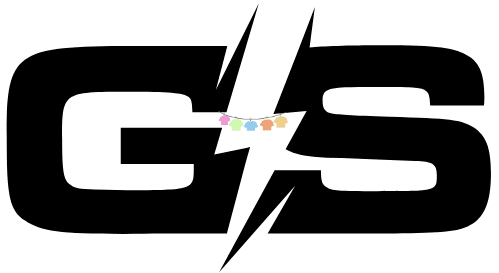
Starting a clothing brand means navigating many unfamiliar terms, like white label and private label clothing . Cut and sew stands out as a key method for creating custom garments. This approach allows brands to design pieces from scratch, ensuring a unique identity. Transitioning into this space requires finding an appropriate manufacturer who can handle the garment manufacturing process effectively. Gears Sphere stands out as the right manufacturer for your brand.
With different methods and a huge number of services available, clothing manufacturers offer an array of options, from design to stitching. Choosing the right partner can feel challenging, but understanding the basics simplifies the journey.
This detailed article covers everything you need to know to make the process easy and rewarding. If you are looking for a manufacturer then there is no need to scroll, but if you are here for information, then you may continue reading on.
Curious about what your idea would cost to produce? We’ll break it down for you, no pressure.
Topics Discussed
ToggleWhat Does Cut & Sew Mean?
Cut and sew is a manufacturing technique used for years in the clothing industry to create high-quality garments and fabric-based products. This process involves taking fabric of full length and width, cutting it into specific patterns with a machine, and then assembling the pieces into a finished garment.
It also enhances garments by dividing them into sections and reassembling them to meet precise design specifications. Beyond clothing, this versatile method produces a diverse range of items such as dust-collecting bags, tents, and foam seats.
Whether creating garments from scratch or customizing existing ones, the meticulous process ensures high-quality results by aligning patterns, maintaining color specifications, and meeting the exact expectations.
The Difference Between Full Service and Cut & Sew Factories
Creating apparel or other products begins with selecting the right manufacturing company. It’s important to partner with manufacturers that specialize in fabrics, price points, and brand sizes suited to your needs. Factories fall into two main categories: full service and cut & sew, each with its own pros and cons. Knowing the difference ensures your merch is made efficiently and aligns with your objectives.
Full Package Production (or FPP ) companies truly deliver on what the name implies. They offer a broad range of services to create apparel from start to finish. They manage everything, including fabric and trim sourcing, printing, neck labels, hang tags, patterns, and product development. They also handle grading, marking, samples, production, packaging, and shipping, making them a one-stop solution.
With large internal teams, in-house production, and strong connections to outside vendors, these factories can help source materials seamlessly. For example, we provides custom packaging stuff for free to our clients, making an efficient and reliable option for businesses seeking streamlined production.
Cut and sew (also called CMT, short for Cut, Make, Trim) factories are specialized sewing contractors. These factories are hired to produce apparel by creating samples or completing bulk production. While they may also print, pack, and ship, their primary focus is on the cutting and sewing stages, and this is the main drawback.
With a cut and sew factory, you are responsible for sourcing and purchasing materials and delivering them to the factory on time. You must also handle product development or work with a pattern maker to ensure designs are ready.
For your clothing brands, working with a full service manufacturing company can be a more efficient choice. Bringing everything together in one place, it simplifies the process and ensures everything flows smoothly from start to finish.
The Process Of Cut and Sew Manufacturing
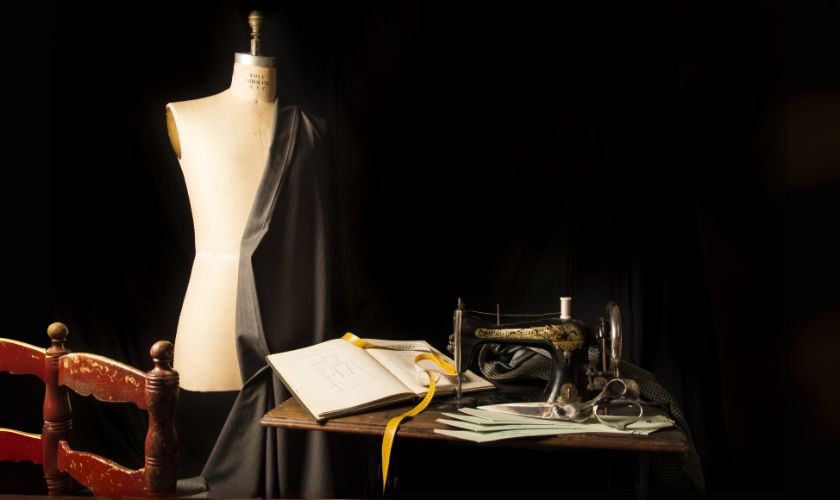
Cut and sew is a manufacturing technique where specialists work closely with designers to transform ideas, plans, and concepts into mass-produced products. This process allows individuals with a creative vision to bring their garments to life.
Whether it’s hoodies, sweatshirts, t-shirts, jackets, dresses, or leggings, cut and sew offers many possibilities for creating customized pieces.
The cut and sew process may seem accessible, but in practice, it demands hard work, careful consideration, and attention to detail. We have divided the process into three stages to make it easier for you to understand. Each stage is essential for making a final clothing product that meets the desired quality and design standards.
Pre-Production
Creating a Specification Sheet
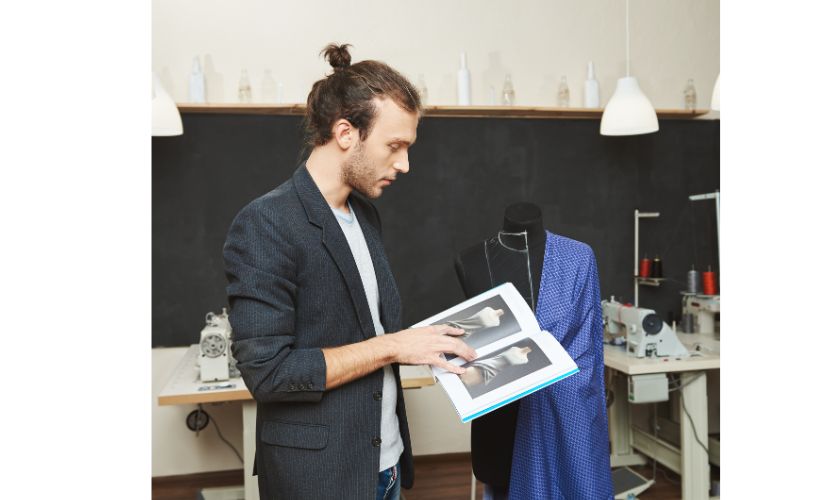
The first step in cut and sew manufacturing is creating a specification sheet. This important document outlines the measurements, sizes, and sketches of the designs to be produced. A designer prepares it to provide clear instructions on how the final product should look, from the style to the fit. It acts as the primary tool for pattern makers and apparel manufacturers, giving them clear instructions on how to turn your creative vision into a reality.
This specification sheet serves as a clear communication tool between all involved in the production process. It provides the necessary details for turning creative concepts into a manufactured product. With everything laid out, the manufacturer can proceed with the next stages of production, ensuring everything is made according to the design concept. This step is crucial for the success of the final garment.
Pattern Making
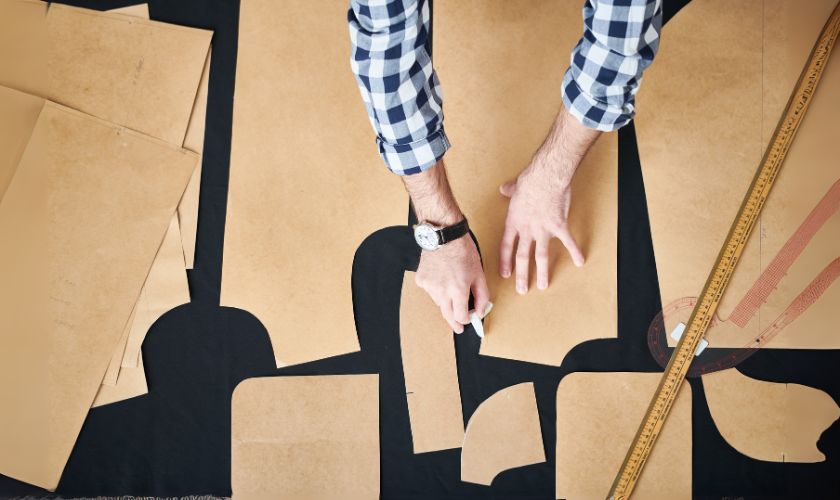
Pattern making is a crucial step in the cut and sew manufacturing process, requiring keen attention to detail. It is an essential part of the pre-production process, where experts with adequate knowledge and experience create patterns for the clothing line. The pattern maker uses his knowledge of sizing and measurements to ensure the design fits properly and looks great.
During this stage, the measures taken must be accurate and correct to avoid issues later in production. The pattern maker’s understanding of the fabric and design helps ensure the process runs smoothly, leading to the creation of the right patterns. Proper pattern making sets the foundation for the entire production.
Garment Sampling
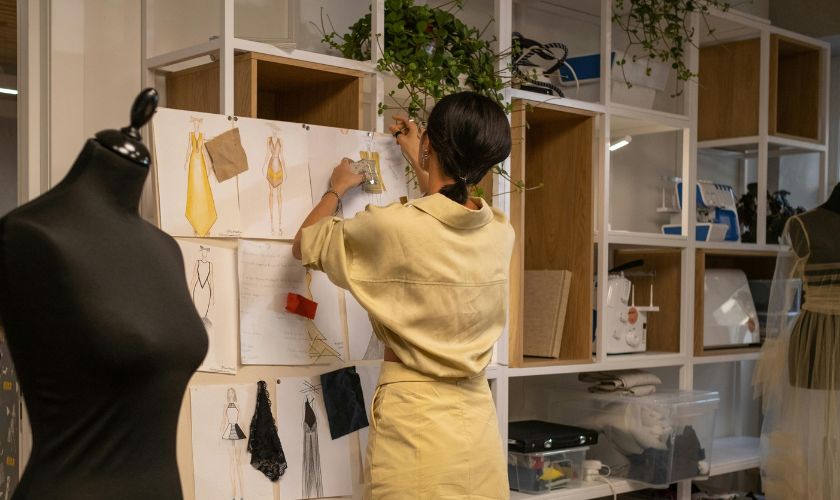
The next step in the process is garment sampling. During sample creation, the pattern is sewn together with the other components of the garment. Afterward, the sample is tested on a model or dummy to check the sizing and fit. This testing phase provides valuable insights into the accuracy of the design, helping to identify any potential issues early on.
If the sample has any problems, adjustments can be made, and any flaws can be corrected before moving on to bulk production. Once all necessary changes are made, the sample is finalized and approved for large-scale production.
Finalizing the Design
When you get the sample right on the first try, it’s a lucky win! However, it usually takes a few revisions to finalize and approve the design. The pattern size and sample may need adjusting to get the fit just right. Once you’ve made the necessary tweaks and fine-tuned everything, the design is ready for large-scale production.
For bulk orders, it’s important to ensure the design is flawless, which may take time and several revisions. This guarantees that the final product meets your exact requirements and is consistent across the entire production run.
Production Stage
Cutting the Fabric
Cutting the fabric is a crucial step in the cut-and-sew process, where the right material is prepared for assembly. Tables are set up with the fabric, and the pattern is placed on top to ensure precise cutting according to the specifications. This process requires great precision to avoid any discrepancies that could affect the fit of the garment.
In modern cutting operations, automated machines are often used to improve speed and accuracy, ensuring that the fabric is cut quickly and consistently. These machines help in reducing waste, making the process more efficient.
Sewing and Assembly
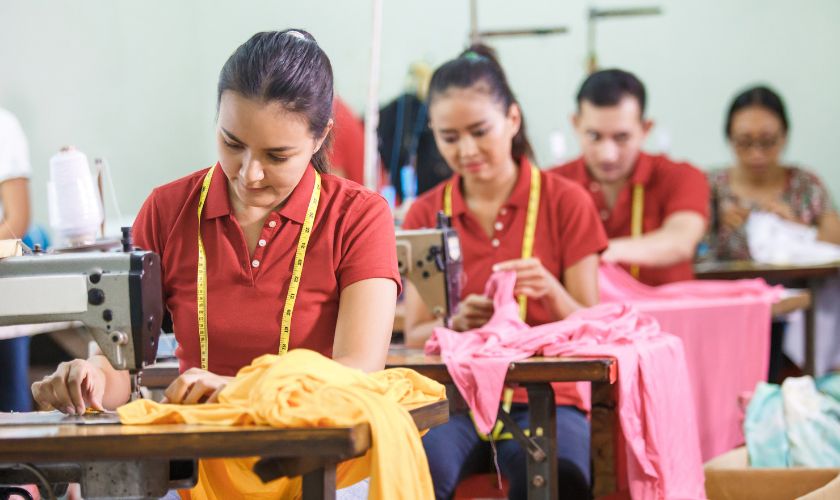
The sewing and assembly stage is where the pieces of fabric come together to form the final garment. Skilled sewists use advanced sewing techniques to stitch together the fabric as per the design specifications. This process involves sewing intricate details, such as sleeves, collars, and decorative elements, ensuring a perfect finish. As the complexity of the design increases, the sewing process becomes more detailed.
Post Production
Quality Control
After the garment is assembled, it goes through a thorough inspection to ensure everything is in order. This process helps to identify any defects or inconsistencies that may need attention. The necessary adjustments could involve fixing seams, adjusting the fit, or addressing any visual flaws.
Finishing Touches
Once the inspection is complete, it’s time for the final touches. This can include attaching customized buttons, zippers, neck labels, and other hardware to give the garment its final look. The garment is then ironed or pressed for a clean, professional appearance. Once these steps are done, the garment is ready for packaging and shipment to its destination.
FAQ
What is the cut and sew method?
Cut-and-sew is a manufacturing process in which raw fabric is carefully cut and then sewn to create garments from scratch. This approach allows manufacturers to focus on producing higher-quality items compared to the mass-produced techniques commonly used in bulk production.
What is the difference between cut and sew and fully fashioned?
Fully fashioned knitwear is known for its higher quality because it is made from a single piece of fabric, resulting in a seamless garment. This method provides a neater finish, without any unsightly seams throughout the entire garment. On the other hand, cut and sew involves cutting fabric into pieces and stitching them together, which may include visible seams but offers more design flexibility. Each method has its strengths depending on the desired look and feel of the finished product.
What is the process of cutting and sewing?
The cut and sew process is a design process with a fresh approach to an old practice. It starts with cutting fabric and then assembling it into garments. Unlike pre-made blanks, it allows brands and designers to print a garment before it’s fully manufactured, offering more control over the final product. Typically, t-shirts are ordered from wholesalers, and the design is printed onto them, ensuring every piece reflects the desired creativity and quality.
Is cut and sew expensive?
The cut and sew process can be expensive, especially if you’re working with a limited budget. Its high level of customization often requires higher minimums, meaning you may need to order more units upfront. The cost comes from the detailed garment construction, which focuses on creating unique designs rather than using standard pre-made blanks. If cost is a concern, exploring Gears Sphere production might better fit your needs.
How to know if something is cut and sew?
A cut and sew garment is made with custom measurements and tailored fabric, unlike a pre-made blank garment. In cut and sew manufacturing, the process involves detailed steps such as pattern making, maker making, cutting, sewing, finishing, and quality control. Each garment is carefully cut and sewn to match the specific design, ensuring a unique and personalized product. This attention to detail is what sets it apart from mass-produced options.
